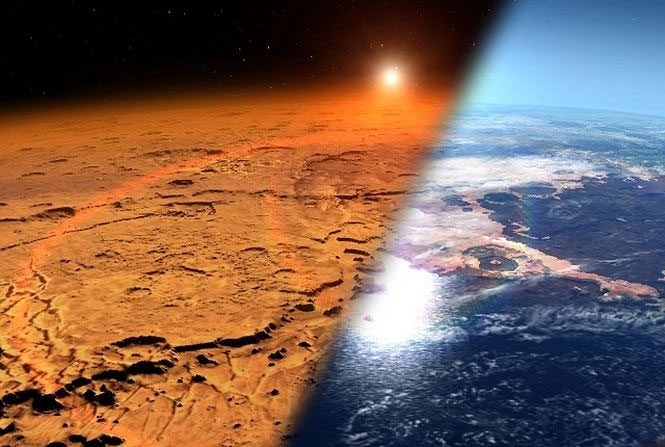Mystery of life beneath the surface of Mars
New research shows evidence that under ancient Mars surface contains a large amount of chemical energy to help bacteria grow strongly.
Researcher Jesse Tarnas thinks there is a biosphere below the surface of Mars and it is similar to the underground habitat on Earth.
Earth has a habitat of an underground microbial ecosystem. Because of the lack of sunlight, underground bacteria take energy from their surrounding habitats and dissolved hydrogen molecules are considered an excellent fuel supplier for them. According to recent research, the radiation process breaks down water molecules into hydrogen and oxygen and thereby creates large amounts of hydrogen beneath the surface of Mars.
While it does not prove the existence of life in Mars, it has helped to show that the main ingredient available for millions of years can help create life on Mars. At the same time, it makes sense to explore the signs of life on Mars in the future.
Go deep into the ground

Below the surface of Mars there are many similarities with the Earth.
The temperature on the surface of Mars rarely exceeds freezing, the wet period is rapid and not enough to sustain life. Some scientists argue that life exists beneath the surface of Mars will be more feasible.
Jack Mustard, professor and co-author of the study, said: 'If there is life under the surface of Mars, where is the nature and source of energy? Based on the supply of energy to the underground bacteria on Earth from radiation, Jesse studied radiation on Mars. "
First, the continuous decay of the elements thorium, potassium and uranium provides radiation as a water resolution and based on that, scientists calculate diversity 4 billion years ago and the idea of flow radiation dissociation.
The next step is to estimate the amount of water that can take place. Scientists used measurements to estimate the space needed to contain an appropriate amount of water.

Mars is more likely to appear life.
Finally determine the ideal location. It can't be too cold to freeze but it can't be too hot.
Combining those analyzes, scientists believe there may be an area with a few kilometers of thickness in existence, organisms that take energy from radiation and will survive for hundreds of millions of years.
Tarnas said that much of the hydrogen exists in cold climates because the thick ice prevents hydrogen from escaping from the surface. At the same time, consider that to change the perception of the relationship between climate and ancient life on Mars.
The meaning of the survey
Tarnas and Mustard argue that these findings are valuable in finding life on Mars. Tarnas said: 'One of the most interesting things is to explore the rock mass formed by the impact of meteorites and being considered by NASA. ' The remnant area of underground life may be the largest living area on the planet. "
- New discovery of life survival under the surface of Mars
- What mystery of Mars awaits discovery?
- Why is it important to find methane gas on Mars?
- Mars surface exists organic matter
- Mars contains more groundwater than Earth?
- NASA confirmed that there was water flowing on Mars
- NASA suddenly announced shock about life on Mars
- New sign of life in Mars
- Detecting a 20km lake under the surface of Mars
- Be overwhelmed by images of life on Mars that may appear in the future
- More evidence that Mars had life
- Discovered two locations with potential to nurture life on Mars
 Announced 3 houses on the Moon and Mars
Announced 3 houses on the Moon and Mars Science proves: Mars also knows 'deflated'
Science proves: Mars also knows 'deflated' Elon Musk announced the price for a Mars trip was 11.6 billion VND, free of charge
Elon Musk announced the price for a Mars trip was 11.6 billion VND, free of charge NASA discovered strange 'gate' on Mars, is the hiding place found?
NASA discovered strange 'gate' on Mars, is the hiding place found?